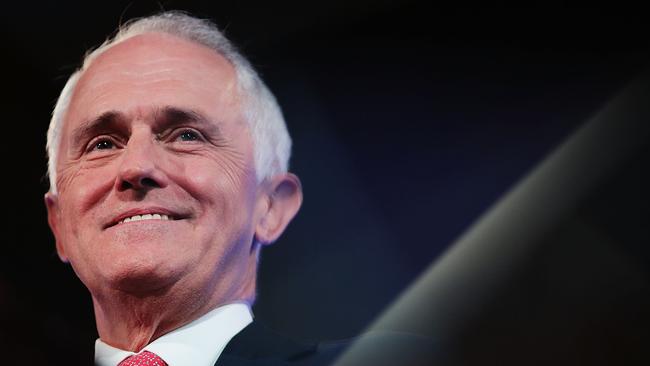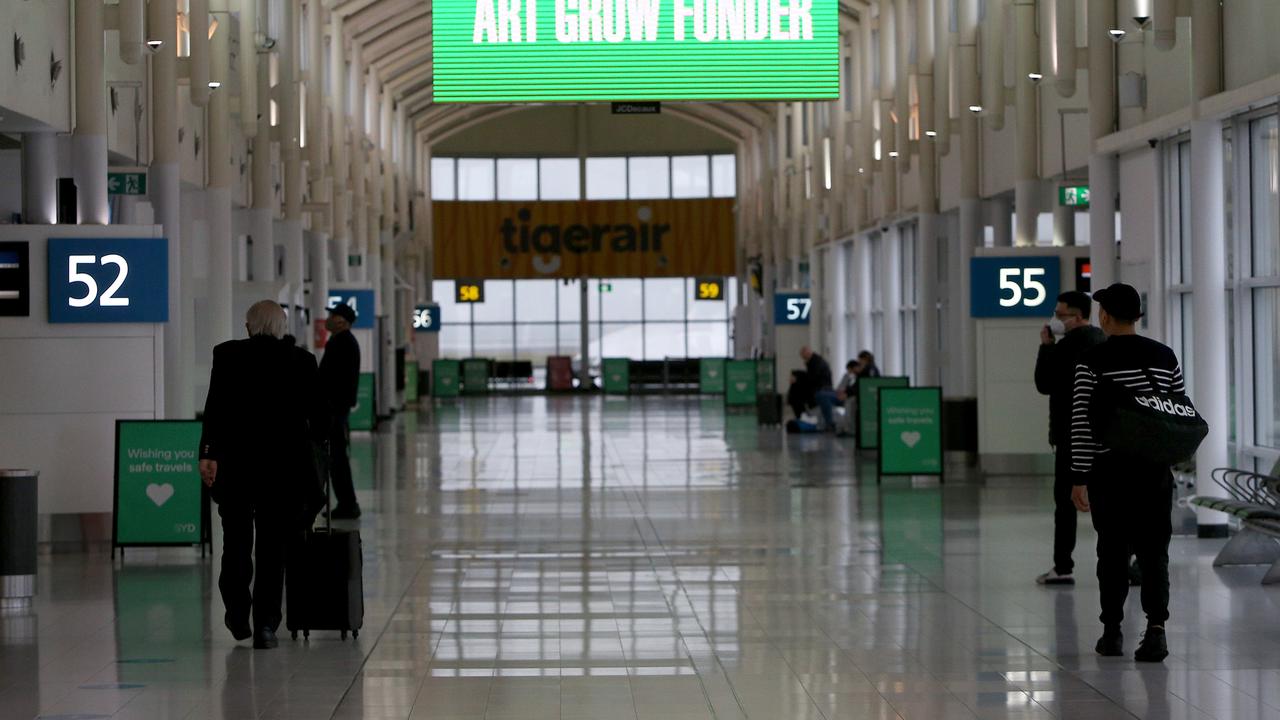Terry McCrann: Does the Fund have a future?
WHAT to do about Peter Costello’s Future Fund and its $128 billion — that’s about $5300 for every single Australian.

Terry McCrann
Don't miss out on the headlines from Terry McCrann. Followed categories will be added to My News.
WHAT to do about Peter Costello’s Future Fund and its $128 billion — that’s about $5300 for every single Australian.
Actually, that’s your Future Fund and literally your money; in more ways than one. Not only does the $128 billion belong to the taxpayer, but it originally came from the taxpayer.
The $60 billion or so that kicked it off — the rest has been added by a sparkling and to some extent extraordinarily lucky investment performance — came from too much taxation in the first place.
That is to say, when tax revenues were running well above what was actually needed to fund government spending; back in the day when we had a treasurer named Costello and a quaint historical artefact called a ‘Budget surplus’.
Maybe, that alone is reason enough to deliver on that demand from the treasurer-turned-guardian that we keep the FF alive and kicking. It would act as a living reminder of that thing called a ‘Budget surplus’ because, much like a dinosaur or a dodo, we are never again going to see another one in real life.
Permanent federal Budget deficits are now a thoroughly bipartisan commitment. This and future coalition governments might make — to be candid, half-hearted — efforts to cut future deficits. But even modest cuts won’t get through a permanently feral Senate.
While future Labor governments won’t even make those half-hearted efforts. We can only pray that those governments won’t make the future deficits even bigger — both by direct spending and crazy policies that hurt jobs and investment and so reduce tax revenues.
So in a sense the Future Fund of chief guardian (as they call FF directors) Costello was not only created by the last Budget surpluses in Australian federal fiscal history of treasurer Costello; but it gives those departed surpluses continuing contemporary life and relevance.
Now, apart from quarantining the money from his feral — sorry, esteemed — cabinet colleagues; the intended purpose of the FF and its money was to fund some of the huge and ever-spiralling superannuation bill for federal public servants.
Public sector super — that’s both for the pollies and the bureaucrats — had always been funded on the basis of the quaintly named ‘pay-as-you-go system’. Not they pay-as-you-go; but you, the taxpayer, pay-as-they-go.
That unlike your super where you have to put the money in every year as you work, and then you only get your money plus what it has earned back in retirement; the PS put in nothing or nominal amounts and would get back in retirement very generous pensions paid out of current Budget revenue from taxpayers. Or by borrowing (the Budget deficit).
Now yes, that has now changed. Both the pollies and the public servants have to make contributions like normal workers. But the huge bill for what might be termed ‘old’ public servants keeps growing at geometric pace; and more and more of those ‘old’ public servants are moving into retirement and the lush pensions.
So on the one hand, the bill has grown much faster than anticipated when the FF was established around 2006; on the other, thank goodness, the FF has grown much bigger than could have been hoped for back then.
It’s generated spectacularly good returns. It also got the timing of its birth exactly right — emerging with a $60 billion pot of cash just when there were bargains galore to be snapped up right around the world after the GFC in 2008. The FF was managed by people clever enough to snap them up.
Now chief guardian Costello wants to backtrack on what treasurer Costello wrote into law back then.
As treasurer he committed the FF to start paying money into the Budget — and on to retiring public servants — in 2020. Eventually its balances would drop to zero and the Future Fund would become the Yesterday Fund.
We have essentially three choices.
Keep the FF as a taxpayer-owned pile of money, with only its — hopefully rising — ‘profits’ paid into the Budget. Or indeed even something less than its ‘profit’; so like a company it could grow a bit.
Pay into the Budget more than its ‘profit’, but only so that it shrinks slowly. Pay into the Budget a much bigger amount each year, to take pressure of the Budget numbers, and so that it would quite quickly become the Yesterday Fund.
There are good arguments for all three. But the weakest is for the first. As a general principle it is not a good idea to overtax to build up a pile of money to then be controlled — if not actually managed — by bureaucrats and pollies.
First, tax is an anti-growth wedge; necessary up to a point but not beyond that point. And secondly, bureaucrats/pollies make bad guardians of money.
The example of Norway and its $1 trillion-plus sovereign fund is not relevant. That money came (comes) directly from oil profits; not directly from overtaxing citizens, as the FF money did. Specifically, with a $100 billion-plus FF pot-of-money, I would tremble at a future government deciding, for example, a wonderful way to spend it would be to build a high-speed rail line between Brisbane and Melbourne.
The core issue, given the reality of permanent Budget deficits, is that for every dollar not directed from the FF into the Budget, a dollar has to be borrowed. Although in terms of our net government debt that makes no difference.
There is an argument, projected by Costello, that if the FF can sustain its 8 per cent earning rate — and the government can borrow at, say, 4 per cent — we the taxpayer are better off to the tune of $5 billion a year (the difference between those rates on the $128 billion) by keeping it.
That to me suggests that right now the best alternative would be to have the FF decline slowly.

MALCOLM Turnbull gave a very impressive, very prime ministerial, speech on Wednesday. Presentationally, easily the best he’s given and indeed of any PM in recent memory.
He spoke very authoritatively, he spoke tautly and cohesively; there were no ums and ahs or glasses-as-clumsy-prop in hand; no digressions into thought bubbles; and as far as I heard only one semi-justifiable use of the word innovation. Presentation: excellent. Content as a political dynamic: pretty good, especially after Bill Shorten’s unimpressive performance the day before. Substance as a policy dynamic: well, you can’t have everything.
Substantively, the best thing was in what it didn’t promise. That is to say, nothing. But in lacerating the sheer mindless lunacy of Shorten’s send your power bills soaring while we close down the country, he exposed the problem.
Because all he is promising to do, is to do only slightly less of all that. We’ll have fewer windmills, but still too many; power prices won’t go up quite as much, but will still soar. Hopefully, fewer industries will close. And to laud our “highly progressive income tax system?” Sigh.
Originally published as Terry McCrann: Does the Fund have a future?



